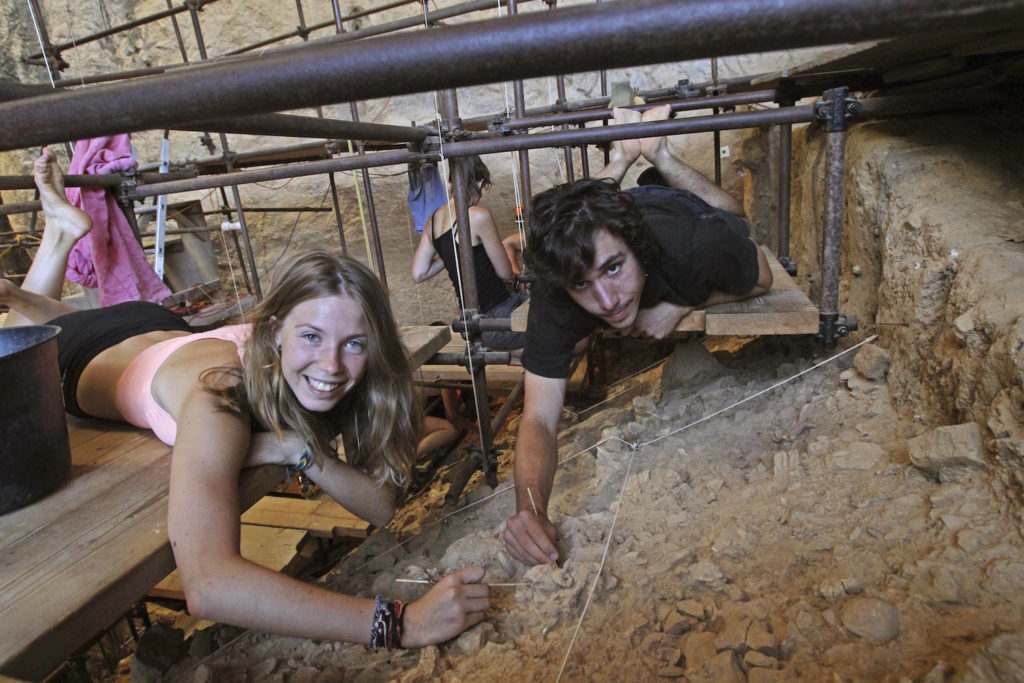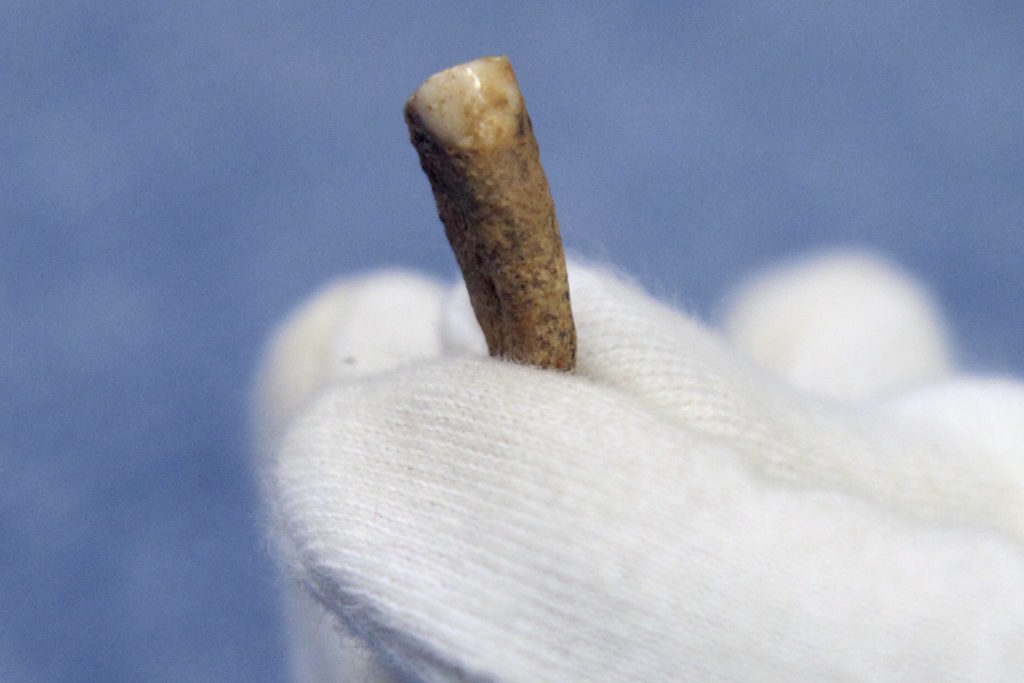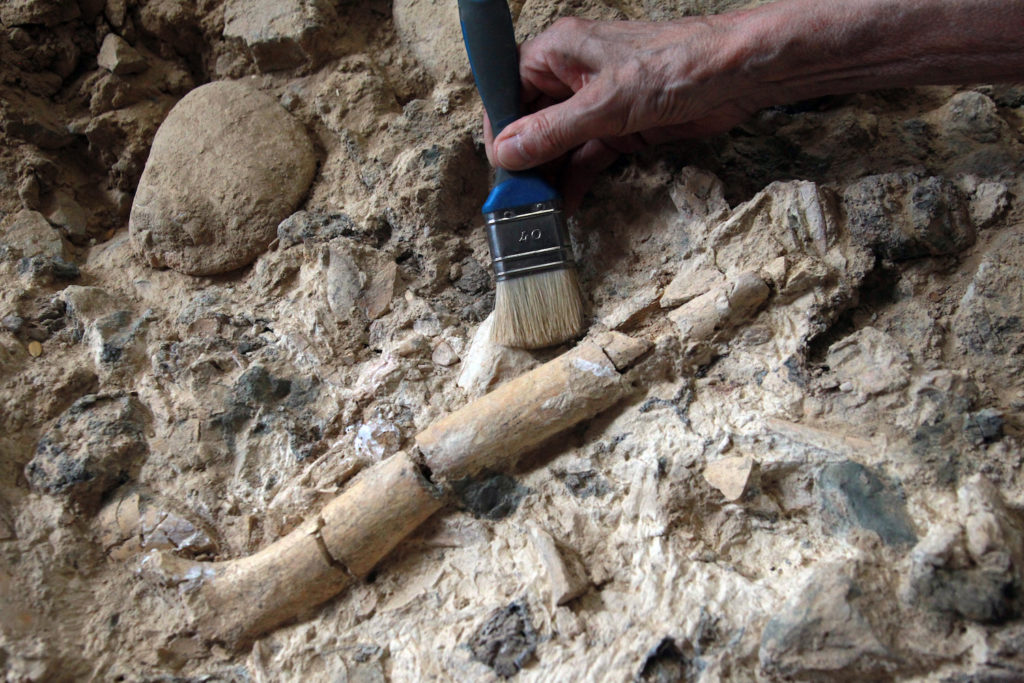Art World
Amateur Teen Archaeologist Finds 560,000-Year-Old Pre-Human Tooth in France


Henri Neuendorf

A 16-year-old French amateur archaeologist unearthed a 560,000-year-old pre-human tooth at an excavation in southwestern France.
Paleo-anthropologist Amelie Viallat told Agence France Presse that it was “a major discovery because we have very few fossils from this period in Europe.”
The teenager, Camille Jacquey, was one of several hundred aspiring archaeologists that work alongside professionals every year at the Arago cave outside the village of Tautavel, one of the most significant archaeological sites in the world.

A researcher holds an adult tooth dating back around 560,000 years discovered by a volunteer archaeologist in the Arago cave near the village of Tautavel by 16-year-old French volunteer archaeologist The owner of the tooth—a very worn lower incisor—lived during a cold, dry and windy period and according to archaeological finds in the cave, hunted horses, reindeer, bison and rhinoceros. Photo courtesy of AFP Photo/Raymond Roig/Getty Images.
Archaeologists have already discovered over 140 fossils of Tautaval men and women at the cave; these early humans walked the earth during the lower paleolithic era, an estimated 450,000 years ago, and were the first of our ancestors to have created and used tools.
Dr Matthew Skinner, a paleo-anthropologist from the University of Kent, England told AFP that the tooth most likely belonged to a species known as Homo heidelbergensis.

A paleontologist works at the archaeological prehistoric site of Caune de l’Arago in Tautavel. Photo courtesy of AFP Photo/Raymond Roig/Getty Images.
“These were certainly different from modern humans, they existed before Neanderthals. They had quite large brains and fairly complex behavior but weren’t modern in the way that we are.”
Tony Chevalier, a paleo-anthropologist from the excavation site at Tautavel said that the discovery could help us understand the disputed origin of the Homo heidelbergensis: “Was Homo heidelbergensis simply European or also African? It is a very important debate,” he said.